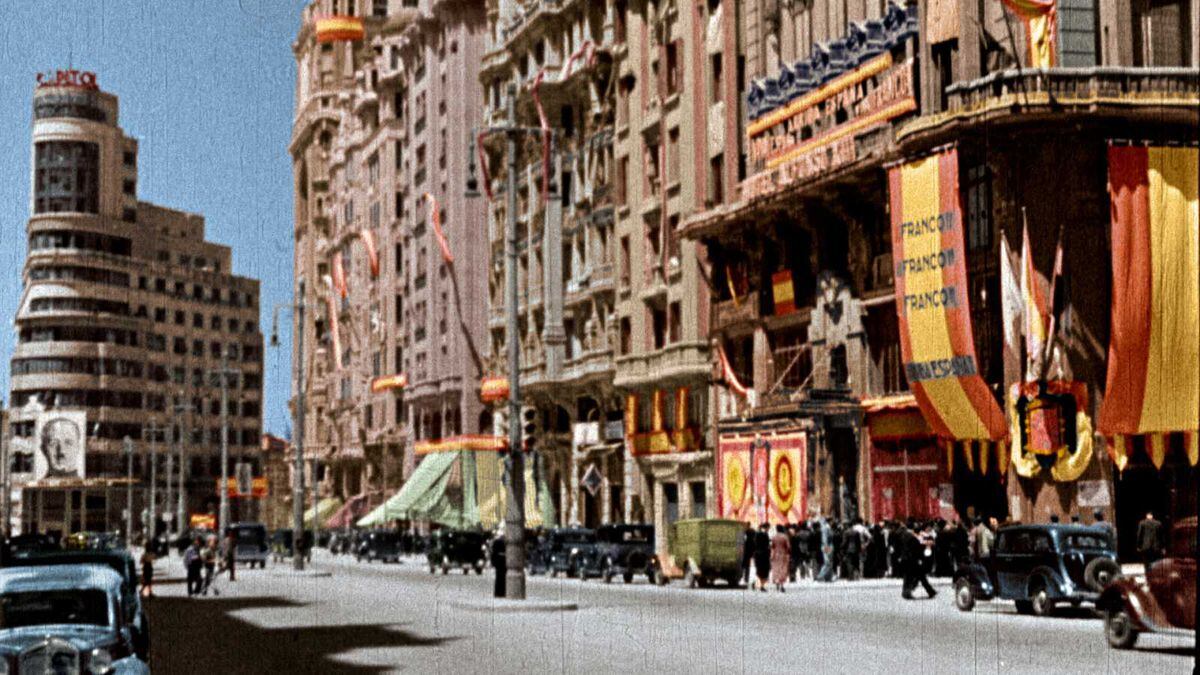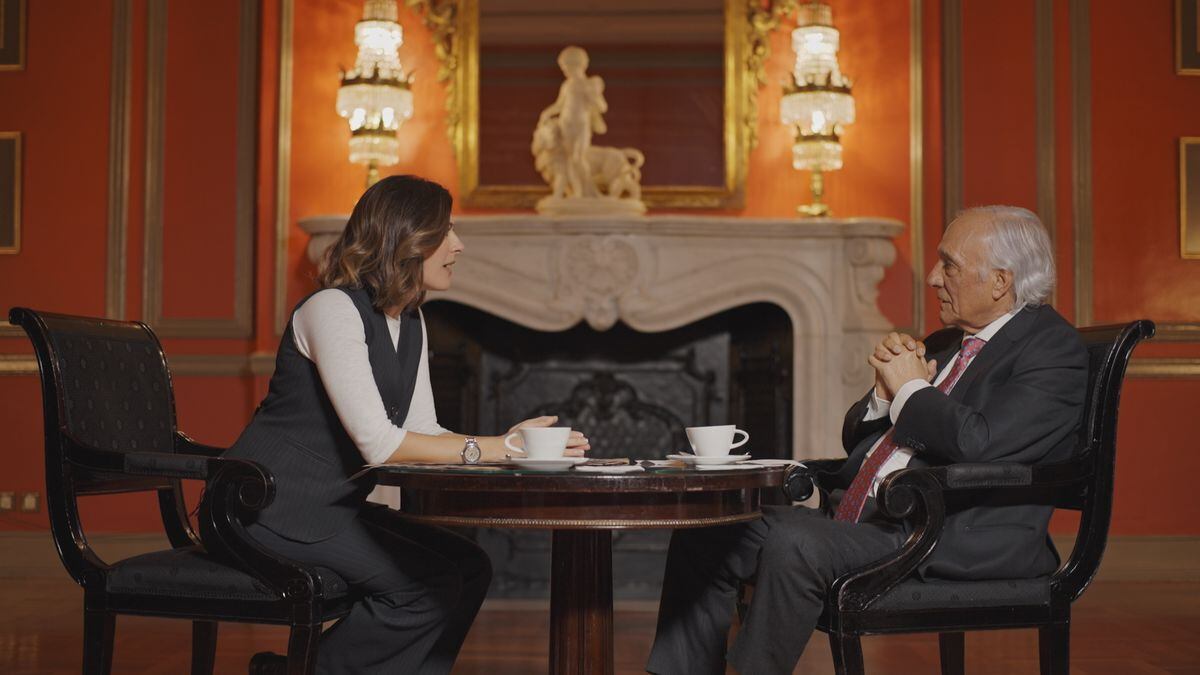When the German public television ZDF produced the series
The hard truth about Franco's dictatorship
in 2017 , and when Netflix scheduled it in 2021, many wondered how it is that documentaries like this are not made in Spain.
Some are made: the last one is a RTVE production with an Absolute Minority, it has just been broadcast on La 2 and is available on RTVE Play.
It hasn't made so much noise because it has a very neutral name:
Spain, the 20th century in color
.
But it covers, in six chapters, the history of this country from the thirties to the seventies.
In other words, it reviews the Franco regime from its precedents (the Primo de Rivera dictatorship) to the scrapping of the regime in the Transition.
The archive images from public television, from No-Do and from the Film Library have been selected with care and colored as is common today in the documentary genre: in reality it is not necessary for the story, but it is more attractive and may serve to catch the zapper
They affirm that the past was not in black and white.
And neither is the script: nuances abound.
They do not shy away from the atrocities of Francoism during the Civil War, in the cruel postwar period and even in the decades of timid opening that followed.
But this series is right in not placing the dictator and his clique at the center of everything: there is a sociological desire to look at the Spanish.
That differentiates it from the German documentary, very focused on the figure of the warlord.
The series briefly goes through the first decades of the 20th century, and it is there where coloring shines the most, applied to the first street filming in Spain.
That it was a country in therapy since the loss of its colonies, with masses in misery and illiteracy, with a dysfunctional political class.
Here you quickly go through some relevant political episodes: for every minute dedicated to Alfonso XIII and his erratic reign, there are several dedicated to how the people lived (badly) at that time.
The illusion that the Second Republic aroused is perceived, and the advance in the freedoms that it brought with it, but it is not idealized and its weak points are clear;
later, the Civil War is told, above all, from the eyes of civilians, in episodes such as Gernika or the brutal attack on the
Desbandá
who fled from Malaga.
Fierce repression followed, the humiliation of the vanquished, the suffocating autarky, the imposition of the national-Catholic ideology.
The focus is well placed on the role of the Catholic Church in the regime, whose repression it blesses;
That was a peculiarity of Spanish fascism.
That lasts for a while, because the papacy of Paul VI implies a distance between the Vatican and El Pardo;
Afterward, some supporters of reconciliation will reach the parishes closest to the town and the bishoprics.
The turn taken by the regime in the second half of the fifties is well told, when Eisenhower passes through here, Ava Gadner settles and the Falangists are replaced by technocrats from Opus.
The Spanish were very fond of cinema, which was a window to the world, a great relief in the worst years of the repression, despite the efforts of the censorship;
mandatory dubbing was the (often ridiculous) way to be able to modify the scripts.
Television (very good television was made in the sixties) and the opening to tourism advanced in the change of customs.
Of course, the desire to attract foreign travelers gave rise to excessive urban development that made almost the entire coastline ugly.
Even before the dictator's death, the independent press emerged, books circulated that would have been banned before, and the disclosure loomed.
but until the end of 1975 opponents were persecuted and tortured and death sentences were signed.
The documentary also takes a look at the cultural life of all this time, from Concha Piquer to Raimon, passing through Manolete and the lackluster Beatles concert in Las Ventas;
and in sports, with the takeoff of football as a mass spectacle, the European Cups in Madrid by Di Stefano or the Urtain phenomenon.
A large family with their Seat 600, in an image from the documentary 'Spain, the 20th century in color'. RTVE
The desire to focus on the people is clear, to a greater extent on those who did not match the official story.
With special attention to women, stripped of their rights when the Republic fell and those who want to corset in the role of submissive wives, dedicated mothers and housewives;
unable to get their passport or work without their husband's permission (what happens today in Afghanistan or Saudi Arabia and horrifies us).
Those same Spanish women were breaking down the doors of the universities and workplaces, they left parties and put on their bikinis (and many agreed to the pill or traveled to London to have an abortion).
When the dictator dies, feminism is already a social force to be reckoned with, and with many battles to fight.
The series also looks at the working class, who knows misery and developmentalism, who comes to access 600 and who stars in the strikes that were the greatest expression of civil resistance at the end of the dictatorship.
Look at the neighborhoods, claimed by neighborhood movements, and the rural environment that revolts against exploitation and abandonment.
Look at the exiles, look at the emigrants.
And he looks a lot at the youth, which includes the children of the victors of the war who no longer identify with the values of their elders.
The universities began to be a focus of conflict, or rather a space of freedom, already before the riots of 1968.
In short, we see that society was always ahead.
Franco died in bed, yes, but Spain was not, never had been, as he saw it.
You can follow EL PAÍS TELEVISIÓN on
or sign up here to receive
our weekly newsletter
.
Subscribe to continue reading
Read without limits
Keep reading
I'm already a subscriber



/cloudfront-eu-central-1.images.arcpublishing.com/prisa/M3MCZT5V6VFJDDOWEKFFP77LRM.jpg)


/cloudfront-eu-central-1.images.arcpublishing.com/prisa/VS4ONSPOPAREFUKG5AYIRYYO4E.jpg)

/cloudfront-eu-central-1.images.arcpublishing.com/prisa/KRD2LI5IMVFG3IDDWM2ZAAPS2I.jpeg)
